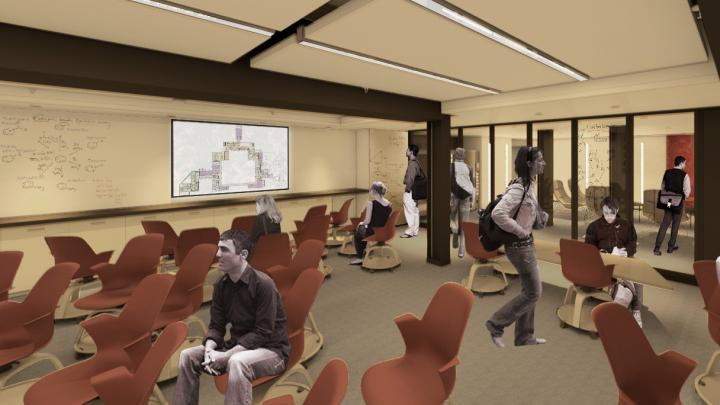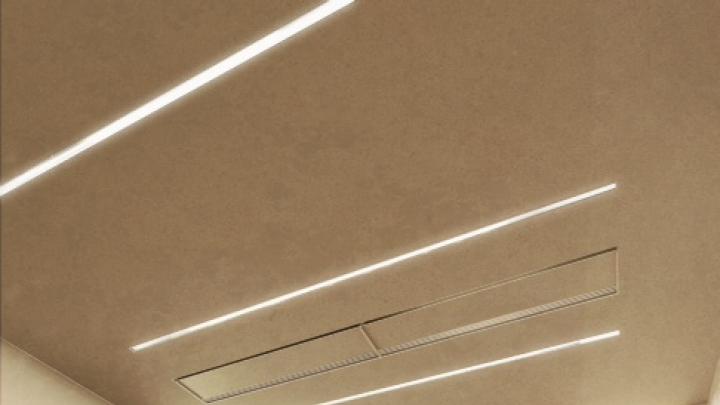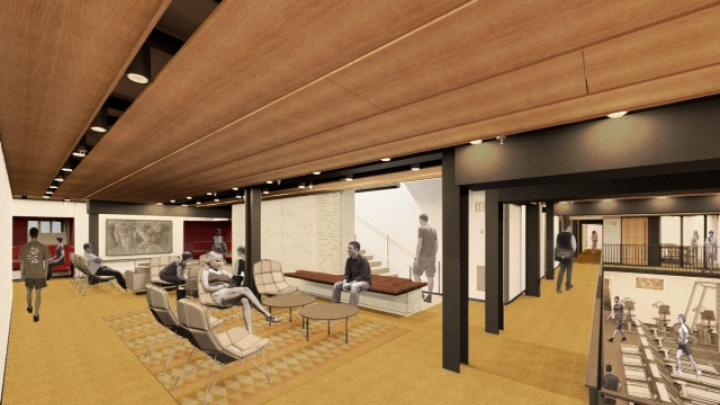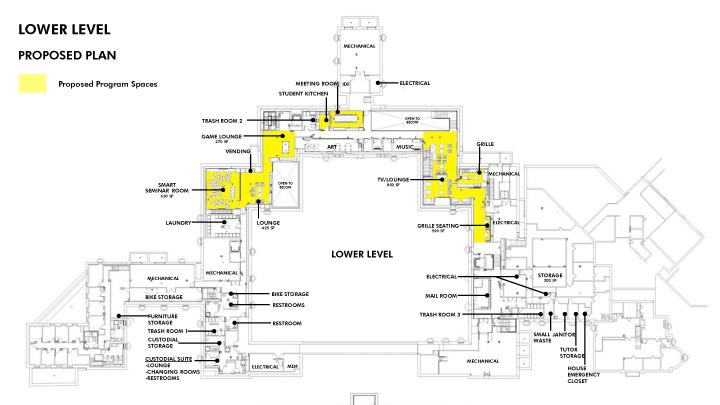The College today released design details for the forthcoming renovation of Dunster House, scheduled to begin right after Commencement and to conclude before classes resume in the fall of 2015. Dunster is the first undergraduate residence to undergo complete reconstruction as part of the comprehensive House renewal program. The work follows initial pilot programs at Old Quincy (now Stone Hall), which welcomed students into their redone quarters for the fall 2013 semester, and Leverett House's McKinlock Hall, where construction continues into this coming summer. (Read complete House renewal coverage here.)
The Dunster news, disseminated to students this morning, reflects some of the design principles tested in the Quincy and Leverett work to date. A notable new feature is clusters of rooms along horizontal corridors, complementing the traditional vertical entryways; this feature improves circulation within the House, and, according to the architect and administrators, contributes to stronger connections among resident tutors and the students whom they advise.
The news release places significant emphasis on Dunster's new and expanded social and common spaces: a technologically equipped "smart" classroom, like the one built in Stone Hall, aimed at bringing faculty members and teaching into the House; an art studio and music-practice space; a grille-common room complex; a game room; a student kitchen; a lounge connected to the courtyard; and a seminar room. Much of the space for recreation, fitness, and exercise facilities will be created by converting existing squash courts to the new uses.
The announcement's emphasis on these House-wide amenities and facilities probably reflects student interest in such spaces since their introduction in the renovated Stone Hall. It may also reflect some effort to underscore the Houses' continuing central role in student life in light of the announcement that the University is pursuing an $80-million renovation and partial conversion of Holyoke Center into the "Smith Campus Center" as a "common space," complete with gathering areas, lounges, study facilities, and food service; planning for that project is in an early stage, so it is unclear how it will intersect with the intended role of the renewed Houses. In fact, Stephen Lassonde, dean of student life, sent an e-mail to undergraduates letting them know about the Dunster House news announcement; pointing prominently to enhancements of "spaces in which to socialize, study, recreate, and relax" in the renewed residences; and explicitly asking them to "keep these developments in the Houses in mind as you share your views about the Center’s future configuration" when student opinions about the Smith Center are solicited.
Longer term, similar amenities and functions may be incorporated into the new School of Engineering and Applied Sciences complex being designed in Allston as well, suggesting a need to proceed carefully lest overlapping, competing investments be made.











